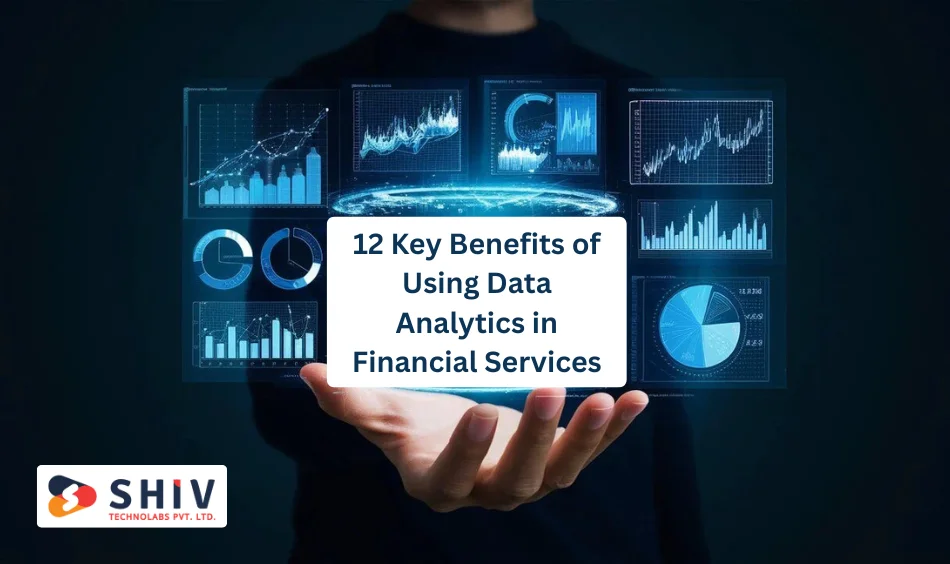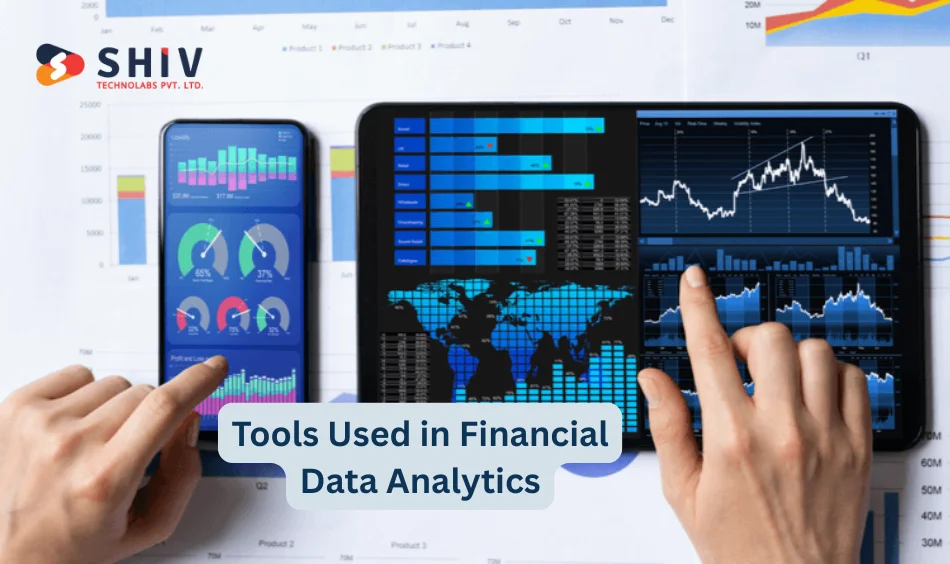Table of Contents
Financial services are changing fast. More companies now use data to guide their decisions. This is where data analytics in financial services comes in. It helps banks, insurance companies, and investment firms use their data to work smarter.
Data is no longer just numbers in a report. With the right tools, it becomes valuable insights. These insights help improve customer service, spot risks early, and grow profits. Over 64% of financial firms now use data analytics to improve business processes.
In this guide, we’ll look at 12 clear benefits of using financial data analytics. The goal is to explain things simply—no tech jargon. Even if you’re not into numbers, you’ll see why it matters.
If you run a financial business or work in one, this article is for you. We’ll have a look at the importance of data analytics in the finance sector.
What Is Data Analytics in Financial Services?
Through software and tools, data analytics is used to analyze large groups of data. In finance, this includes customer data, transaction history, and market trends. With the help of financial analytics software, companies can:
- Find patterns
- Make better decisions
- Reduce costs
- Improve services
This process is also called financial data analysis, and it helps companies stay ahead in a fast-changing market.
Top 12 Key Benefits of Using Data Analytics in Financial Services

Below are the key benefits of Data Analytics in Financial Services:
1. Better Decision-Making
Collaborating teams use data to back up the decisions they make instead of guessing. For example:
- A bank can see which products customers use most.
- An insurance company can learn which areas have more claims.
This helps leaders act with confidence. A recent report found that companies using data analytics make decisions 5x faster than those that don’t.
2. Improved Risk Management
Data analytics in banking helps find risky customers or transactions early. By studying patterns, banks can:
- Spot fraud
- Check credit risks
- Avoid loan defaults
This means fewer losses and more secure operations.
3. Real-Time Monitoring
With financial data analytics, firms can watch what’s happening as it occurs. Real-time alerts and dashboards allow for:
- Faster responses to problems
- Quick updates on
- Smarter daily operations
This helps avoid delays and keeps the business running smoothly.
4. Cost Reduction
Using data analytics in financial services can help reduce costs in many ways:
- Automate manual tasks
- Cut down errors
- Focus resources on profitable areas
A study by McKinsey showed that data-driven finance firms can reduce costs by up to 15%.
5. Enhanced Customer Experience
Data shows what customers like and need. With that knowledge, companies can:
- Offer personalized products
- Improve customer support
- Create loyalty programs
Happy customers stay longer and bring in more business.
6. Fraud Detection and Prevention
Financial firms face many fraud risks. Data analytics helps by:
- Tracking unusual behavior
- Setting up alerts
- Preventing fraud before it happens
Using AI and machine learning with data has helped reduce fraud by 30% in some banks.
7. Accurate Forecasting
With financial data analysis, companies can predict future trends. This helps with:
- Budget planning
- Market investments
- Preparing for customer needs
Better forecasts lead to more innovative business strategies.
8. Compliance and Regulation Support
Financial businesses must follow strict rules. Data analytics tools help by:
- Tracking rule changes
- Monitoring staff actions
- Keeping clean records
This reduces the risk of fines or legal trouble.
9. Faster Loan Approvals
Banks can use data to check if someone can repay a loan. With analytics:
- Credit history is checked quickly
- Decision-making is automated
- Customers get faster service
This leads to more satisfied clients and faster growth.
10. Better Marketing Campaigns
Data helps you understand your audience. You can learn:
- Which age group uses your services
- What time of year do people borrow more
- Which areas need more attention
This helps create better ads and campaigns that work.
11. Improved Investment Decisions
Using financial analytics software, investment firms can:
- Study market data
- Track stock trends
- Compare risks and returns
This results in better advice and smart investments.
12. Business Growth
All the above benefits lead to one big result—growth. When you:
- Spend less
- Serve better
- Take smarter risks
…your business grows. Data analytics isn’t just a trend. It’s a smart way to run a financial company in 2025 and beyond.
Tools Used in Financial Data Analytics

Here are some popular tools financial firms use:
- Tableau – For dashboards and reports
- Power BI – For visual data analysis
- Python/R – For deeper data
- SAS – For advanced
- Custom dashboards built by data analytics services providers
Each tool serves a purpose and helps businesses get real value from raw data.
Why Financial Firms Are Adopting Analytics Fast
- 64% of financial companies now use data analytics
- 56% say it improves customer service
- 45% use it for fraud detection
These numbers show that data isn’t just useful—it’s necessary.
Want to Make the Most of Your Financial Data?
If your business is still guessing instead of analyzing, you might be falling behind. Data analytics in finance gives you the tools to move forward smartly.
But setting it up the right way takes skill.
Conclusion
Data analytics in financial services is not just about numbers. It’s about understanding your customers, protecting your business, and making smarter moves. From risk control to marketing and growth, the benefits of data analytics in finance are clear.
When it comes to data analytics services, Shiv Technolabs is a name you can trust. Their team helps financial firms like yours build strong, data-powered systems.
So if you’re ready to use data for more intelligent decisions, Shiv Technolabs is here to support you every step of the way.
If you want better results, it’s time to stop guessing and start using data. And if you need expert help, Shiv Technolabs is ready to guide your journey—from data to decision.






















